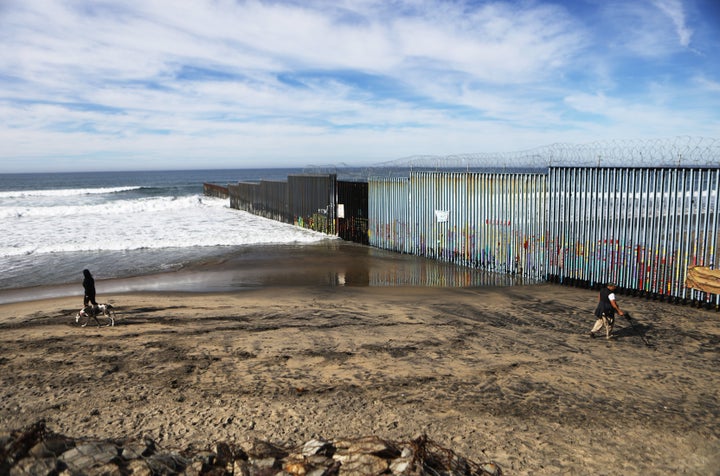In a primetime televised address Tuesday, President Donald Trump repeated his demand for $5.7 billion in border wall money in order to end the nearly three-week federal government shutdown, offering the deal as the only solution to solve a major national security crisis.
“This barrier is absolutely critical to border security. It’s also what our professionals at the border want and need,” Trump said, describing the impasse as a “choice between right and wrong, between justice and injustice.”
But the only thing resembling a crisis on the U.S.-Mexico border isn’t an existential threat to national security ― it’s the question of how to handle a historically high number of Central American families and children coming into the country, many of whom are asking for asylum or some other humanitarian relief from deportation.
The White House position on the issue is clear: Trump wants to either indefinitely detain the Central American migrants or cast them back to Mexico. But the wall won’t achieve either of those aims. Instead, the ploy harkens back to the symbolic solution to a largely fabricated crisis that paved Trump’s way to the presidency back in 2016.
There was no border crisis when Trump launched his campaign in the summer of 2015, promising to wall off the Southern border. Instead, unauthorized crossings stood at their lowest levels since the 1970s. By the numbers, there’s still no crisis ― the unauthorized population of the United States has remained flat for more than a decade.

What has changed in recent years is that more of the migrants who do cross without authorization are Central American asylum seekers ― often traveling together as families or unaccompanied minors. That trend, which began in the summer of 2014, predates Trump. But since he took office, the number of Central American families crossing has risen to historic highs.
In 2010, just 10 percent of all migrants apprehended by Border Patrol were families and unaccompanied children ― instead, most were single men. As of November 2018, families and unaccompanied children make up 57 percent of those apprehended.
The Trump administration has constantly rehauled the immigration enforcement system to scare off the migrant families and children. But none of it ― “zero tolerance” prosecutions for petty immigration offenses, a six-week experiment with systematic family separation, the mobilization of the National Guard and U.S. military, a court-enjoined policy barring migrants from asking for asylum ― have stopped them from arriving.
That trend isn’t particularly surprising. The three countries sending by far the most migrants since 2014 ― Guatemala, El Salvador and Honduras ― all face extreme poverty and some of the highest homicide rates in the world.
And now, Trump’s focus on the wall and several policy changes have led to humanitarian problems of his own making.
“With legal ports of entry largely blocked, many migrants find smugglers to take them on dangerous journeys through mountains and deserts to remote Border Patrol stations far away from medical services.”
Customs and Border Protection officers are only letting between 30 and 90 people a day through legal ports of entry. As a result of that “metering” policy, thousands of migrants are waiting for weeks or months in shelters near the border, which in some cases are outdoor camps with limited access to clean water or large enclosed facilities where disease can easily spread.
With legal ports of entry largely blocked, many migrants find smugglers to take them on dangerous journeys through mountains and deserts to remote Border Patrol stations far away from medical services. The number of parents and children traveling through the El Paso sector, which includes a large swath of the Chihuahuan Desert, has risen by more than 1,500 percent over the past year. The number of border deaths has likewise increased.
If they reach the U.S., families and kids traveling by themselves are put in overcrowded Border Patrol stations that are struggling to deal with the influx of migrants. The Washington Post reported that in recent weeks, agents have been bringing dozens of sick migrants to clinics and hospitals. Last month, two children died while in Border Patrol custody.
In June, Trump implemented a new sponsor vetting policy that has forced children to languish for up to six months in long-term shelters. (In December, the administration rolled back some of the requirements for its vetting policy.) The number of unaccompanied children detained in government custody is at a record high.
Trump won the presidency in 2016 largely by fabricating a border crisis and hawking a massive wall as the solution to the contrived problem. Now, he’s upped the ante, by portraying migrant children and families from Latin America as a security threat so grave that the federal government shouldn’t reopen without committing to building a symbolic wall to, in theory, keep them out.
